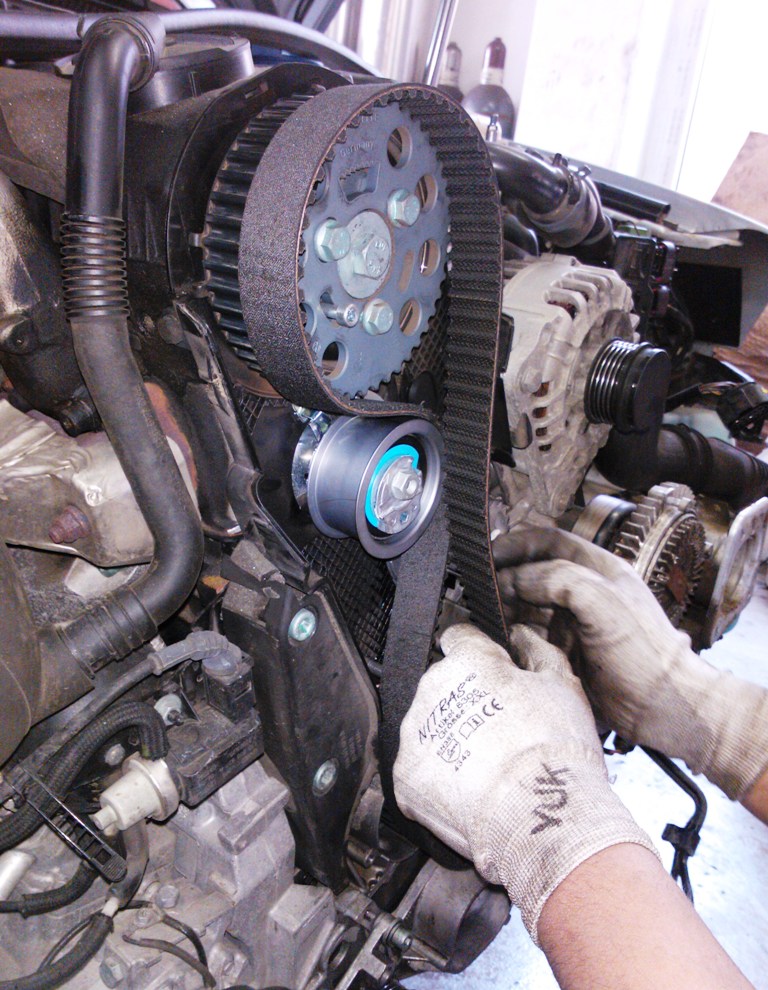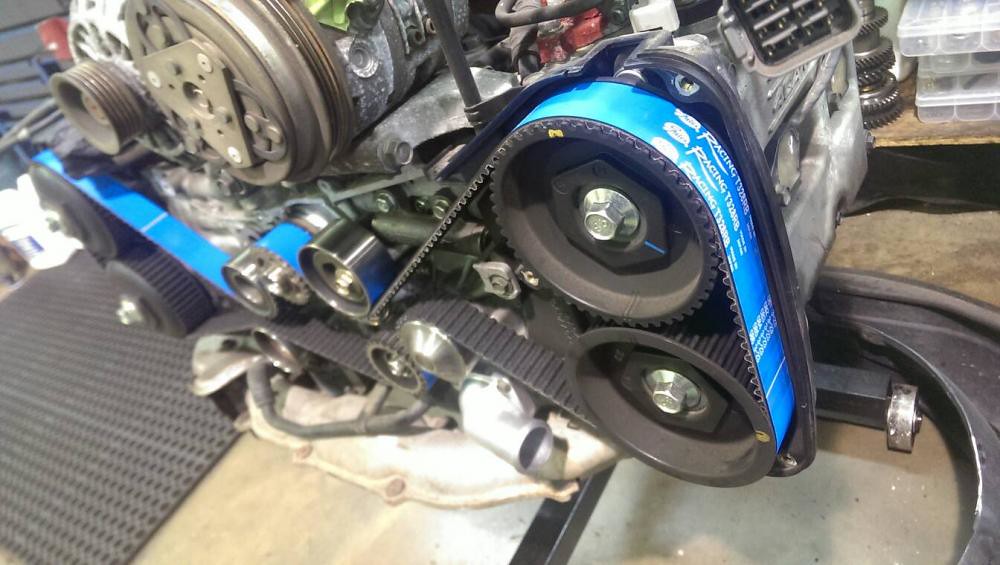Contents
– What is the role of the timing belt?
– The consequences of timing belt noise
– How to identify timing belt noise
– How to repair a timing belt
The timing belt is a vital part of a vehicle’s engine. A timing belt noise is, therefore, a phenomenon that should always be considered alarming. Here we help you to understand it better, treat it and avoid excessive costs.
What is the role of the timing belt?
The timing belt is essential in the process. It allows the synchronization of the engine crankshaft to the camshaft. This synchronous, notched belt transmits the motion of the crankshaft to the camshaft and valves. The valves must open and close at specific times in harmony with the pistons’ up and down movement.
Good to know: the timing belt is guided and tensioned by rollers; it can also drive the water pump.
The consequences of a noisy timing belt
Unfortunately, they are always the same. In the long run, the problem leads to belt breakage or belt misalignment. Pistons and valves come into contact, and engine failure is guaranteed.
How to identify timing belt noise
Timing belt noises are pretty easy to identify. The problem is locating these noises: timing belt or accessory belt… For this, don’t panic! Simply remove or loosen the accessory belt. If the noise persists, it is the timing belt that is at fault.
Normal operating noise
It is not audible or only slightly audible. It may make a slight, steady, whirring noise at idle. In this case, everything is fine.
A dull, regular whistling sound
Similar to the sound of a circular saw in operation, this noise should alert you. It can occur after a timing belt has been changed and is more intense when the engine is hot.
What causes it? The timing belt has been over-tensioned*. As the engine block and cylinder head heat up, they expand, and the distance between the two pulleys (crankshaft and camshaft) increases, accentuating the belt tension and the noise.
Belt tension*: too often, some professionals, due to ignorance or time saving, do not observe the timing procedures and opt for empirical methods, resulting in unsuitable tensions on some assemblies.
Jerky strokes that increase with the engine’s speed of rotation
This is an emergency! It is probably the disintegrating belt and whose shreds are hitting the timing case at regular intervals. Pending a thorough examination, you must stop the engine immediately, or it will break.
The repair of a timing belt

Nature of the intervention
If it has just been installed, a belt that is too tight can be readjusted to the nominal tension*. If the installation is old, the forces generated have put a strain on the belt, the idlers and possibly the water pump bearing. You must therefore change the timing kit.
Be careful; you must change a damaged belt with its rollers.
Nominal tension*: tension recommended by the manufacturer.
Cost of the work
An experienced mechanic must carry out this operation with the necessary equipment (timing pins, tension gauge, etc.).
The price of a timing kit varies according to the engine. For example, a kit for a diesel engine costs between $100 and $300. The labour required for the replacement varies between 2 and 4 hours (from $140 to $300).
Note: it is also advisable to change the accessory belt if it is worn.
To read further:
When Should You Replace the Timing Belt of Your Vehicle
How to Anticipate Timing Belt Failure
Timing Belt: What Changes Should Be Made?
And, remember to share this post and leave your comments below.




